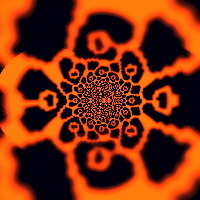[2] 삽입 되는 경우
삽입 되는 경우에는 크게 두가지가 있음
1. 독립 부사절(독립 분사구문) 이 오는 경우와
2. 관계대명사가 이끄는 형용사절
이렇게 크게 두가지가 있다
(부사절에 대한 설명은 약간 아래에..)
2. 관계대명사가 이끄는 형용사절
(1) 계속적인 용법
계속적 용법은
~, 관.대 and/but + 대명사 가 오는 것을 계속적 용법이라 함
이전편에서 보면 , 는 순서적으로 그다음을 말함
만약 , 가 없다면 제한적용법으로 범위를 제한 하겠다는 뉘앙스
The importance of this can hardly be exaggerated, for whole new
industries were emerging to exploit and develop the leisure market,
which was to become a huge source of consumer demand, employment, and profit.
, for whole new industries were emerging to exploit and develop the leisure market,
여기 가지가 삽입형태이며 독립 부사절이다 그리고
끝에 , 가 오고 which 가 오는데 => 관계 대명사의 계속적 용법이 된다
부사절 이란?
☆부사절이란 종속절 중에 '명사절 & 형용사절' 을 제외한 나머지 전부라고 생각하면 됩니다. 즉, 종속절이 문장속에서 그 문장의 주어(S),목적어(O),보어(C) 역할을 하면 명사절, 앞에 있는 선행사를 꾸며주면 형용사절, 나머지 모두는 부사절이라 합니다.
부사절 접속사와 전치사의 구분
부사절은 절이기 때문에 반드시 주어와 동사가 있어야 합니다. 즉 부사절 접속사 다음에 주어와 동사가 옵니다.
. '때' 를 나타내는 부사절
* when + 주어 + 동사 ...
주어가 ~할 때에
* as + 주어 + 동사 ...
주어가 ~할 때에
2. '조건' 의 부사절
* if + 주어 + 동사 ...
만약 주어가 ~한다면
* unless + 주어 + 동사 ...
만약 주어가 ~하지 않는다면
* in case + 주어 + 동사 ...
3. '원인, 이유' 의 부사절
* because + 주어 + 동사...
= as + 주어 + 동사...
= since + 주어 + 동사...
주어가 ~하기 때문에
*now that + 주어 + 동사...
이제 주어가 ~하니까
4. '목적, 결과' 의 부사절
* so that + 주어 + 동사...
= in order that + 주어 + 동사...
주어가 ~하기 위하여/~할 수 있게...
* so + 형 + 명 + that + 주 + 동...
= such a + 형 + 명 + that + 주 + 동...
매우 어떠한 무엇이어서 주어가 ~한다
등등등..
다시 콤마로 돌아와서..
[3] 동격인경우의 콤마
For example, the energy output from solar panels or wind power
engines, where most investment happens before they begin
producing, may need to be assessed differently when compared
to most fossil fuel extraction technologies, where a large
proportion of the energy output comes much sooner, and a
larger (relative) proportion of inputs is applied during the
extraction process, and not upfront.
동격이란
Jim , my freind , was ~
에서 , my freind , 이 동격으로 들어간것이고 원래 문장은
Jim , (who was) my freind , was ~ 로 주격 관계 대명사가 생략된 문장이다
, where most investment happens before they begin
producing, 는 삽입으로 들어간 부분이다
즉 where 이 engines 를 수식 하는 형태가 된다 동격이됨
where 는 이때 in which 로 바꿔 쓸 수 있다
그런데
technologies, where a large
proportion of the energy output comes much sooner, and a
larger (relative) proportion of inputs is applied during the
extraction process, and not upfront.
, where 부터 이 부분도 삽입이다, 삽입은 중간에만 오는것이 아닌 맨 끝에도 올 수 있다
where 부터 upfront 까지가 삽입 구문이다
technologies, where a large
proportion of the energy output comes much sooner,
where는 solar panels or wind power engines, 를 수식 하는게 아니고
바로 앞의 technologies를 수식 하는 것
동격임으로
upfront : 선행, 선불의
and not upfront : 선불이 아닌 (초기 투자비용은 아닌)
, and a larger (relative) proportion ..
이 부분을 어떻게 봐야 할지 생각 할수 있는데 문장의 맥락상 where 삽입 구문과 이어지는 맥락이라는 것을 알 수 있다
콤마 정리
[1] 같은 품사 또는 동질의 문장을 배열/나열/열거 한다
[2] 삽입 역할을 해준다
1.독립 부사절(구) => (계속적 용법 , 동격) 이라는 것이 있다 [동격은 독립 부사절 분류에 들어가게 된다!!]
2. 관.대 형용사 이런게 오게 된다
[3] 주절과의 독립 (이건 나중에..)
부사절 :
ref : https://www.englishcube.net/grammar_view.php?category1=20&category2=147
ref : https://m.blog.naver.com/PostView.naver?isHttpsRedirect=true&blogId=ddanddan84&logNo=221234982203
'영어 > 영문법' 카테고리의 다른 글
| 콤마 사용법 (3) - 주절과 독립 , 정리 (0) | 2022.09.11 |
|---|---|
| 콤마 사용법 (1) - 같은 품사 나열과 삽입 (0) | 2022.09.11 |
| 분화 복수는 복수취급 (0) | 2022.09.10 |
| 불가산 명사는 단수 information (0) | 2022.08.28 |
| is 다음에 바로 동사 원형이 올 수 있다고? (0) | 2022.05.19 |
